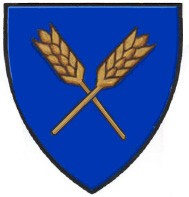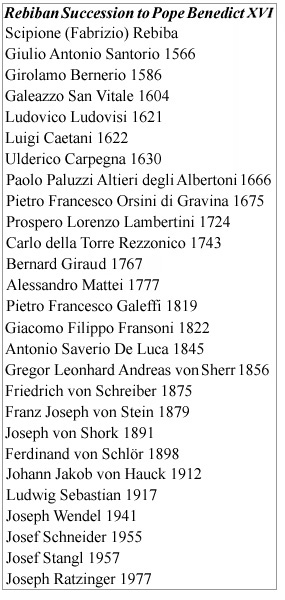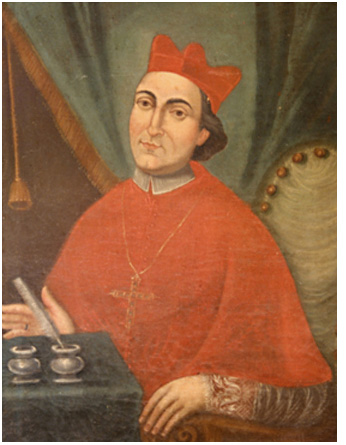...Best of Sicily presents... Best of Sicily Magazine. ... Dedicated to Sicilian art, culture, history, people, places and all things Sicilian. |
by Vincenzo Salerno | ||
Magazine Index Best of Sicily Arts & Culture Fashion Food & Wine History & Society About Us Travel Faqs Contact Map of Sicily |
Building upon the teachings of Jesus and earlier Judaic tradition, the basis of Christianity is faith, belief and a moral code, all bound in scripture and millennial tradition. Apostolic succession reflects certain influences of earlier practices among the priesthoods of the Egyptians, Hebrews and other ancient peoples. In the early church, Clement, Ignatius of Antioch (a personal disciple of the apostles Paul and John), Timothy and Titus (followers of Paul) and other early church fathers advocated apostolic succession. The Papacy, like the Orthodox Patriarchates, is built upon it, and the councils of Nicea (325) and Constantinople (381) confirmed it. Until 1054, the Church could indeed be said to be one, holy, catholic (universal) and apostolic. Apostolic succession guaranteed the validity of the orders (sacraments) handed down from the apostles as leaders of the early Christians to the bishops who, in turn, ordained priests. This transmission of "aspostolicity" is an important feature of the continuum of the church but it isn't magic. Like baptisms, weddings, knightly investitures and other religious rites, episcopal consecrations were rarely recorded in medieval times. It really wasn't necessary. A few surviving documentary records chronicle coronations and other events relating to royalty or the aristocracy, but in an era dominated by the Church, ordinations and consecrations were too public for their occurrences to be called into question, while the social environment was sophisticated enough that somebody impersonating a bishop wouldn't be very convincing. For this reason, the apparent lack of the documentary record before 1500 has never bothered anybody in the Vatican enough to doubt the veracity or continuity of apostolic succession, especially considering that at least two bishops are required to effect a valid consecration. That said, one would hope for more complete consecration records than what have been handed down to us. Let's not confuse the term apostolic succession with Patriarchal or Papal succession. Papal succession is simply the list of Popes and their pontificates in chronological order beginning in the Paleo-Christian era. Who was Scipione Rebiba? Sicilian-born Scipione Rebiba would be remembered no more than any other sixteenth-century bishop of the Roman Catholic Church did he not boast a particular historical distinction which arose long after his death. Over ninety-five percent of the bishops serving the Church today trace their line of apostolic succession through this cardinal. This is the so-called Rebiban Succession, and it descends through numerous bishops to every pope elected since 1724. In truth, Scipione Rebiba wasn't particularly zealous in consecrating bishops, but some of his successors were. While it is generally accepted that Rebiba was consecrated by Giovanni Pietro Caraffa, founder of the Theatines and later Pope Paul IV, most recent episcopal "lineages" begin with Rebiba himself, who was a contemporary of Emperor Charles V.
Scipione joined his uncle in Palermo, where he studied theology and law. He was ordained around 1526 and assigned a parish, but around 1536 he went to Rome, where he met Cardinal Caraffa, who was then archbishop of Chieti. In 1541 he was consecrated auxiliary bishop of Chieti, and it is believed that he then assumed the coat of arms shown here. When he became bishop of Naples, Caraffa took Rebiba along with him. Rebiba eventually ended up working in the Roman curia, receiving appointment to the commission of the Holy Office (Inquisition) for the Naples district in 1553, but he assumed similar duties in Rome in 1555, the same year he became a Cardinal. The following year, he travelled to Brussels and France on a diplomatic mission, returning to Italy to accept the See of Pisa, which he administered through a vicar. In 1559 he participated in the conclave which elected his mentor, Caraffa, as Paul IV. By now he was a Vatican bureaucrat in every sense - which is how he is depicted in the painting shown here. He participated in the next conclave, in 1565, which elected Pius V, and that of 1572, which elected Gregory XIII. He eventually became Major Inquisitor. But it is his position in the documented apostolic succession of the Catholic Church, rather than his support of the Counter Reformation, that assured this Sicilian aristocrat's place in history. Scipione Rebiba died in 1577 and is buried in the Church of San Silvestro nel Quirinale, in a tomb dedicated by his nephew Prospero Rebiba. About the Author: Palermo native Vincenzo Salerno has written biographies of several famous Sicilians, including Frederick II and Giuseppe di Lampedusa. | |
Top of Page |
 Scipione "Fabrizio" Rebiba's not-very-famous name is closely linked to an arcane concept
in the pre-reform church called apostolic succession. Every Pope
since Benedict XIII (Pietro Orsini), consecrated bishop in 1675, traces his line
of apostolic succession through Scipione Rebiba. This might be a good time to explain
what - precisely - is meant by "apostolic succession" and why it is
important in certain churches.
Scipione "Fabrizio" Rebiba's not-very-famous name is closely linked to an arcane concept
in the pre-reform church called apostolic succession. Every Pope
since Benedict XIII (Pietro Orsini), consecrated bishop in 1675, traces his line
of apostolic succession through Scipione Rebiba. This might be a good time to explain
what - precisely - is meant by "apostolic succession" and why it is
important in certain churches. In the tree of the historical churches which existed before the Reformation, the principle of apostolic succession
forms part of the trunk close to the roots. The Eastern Orthodox and Roman
Catholic churches parted ways at the Great Schism in 1054, but one of
the reasons they still recognise each other as "churches" (a label
they rarely attach to other denominations except sometimes the Church of England) is because each possesses an unbroken line of
episcopal tradition - bishops consecrating bishops - handed down from the time of the
Apostles. It is thought that in
In the tree of the historical churches which existed before the Reformation, the principle of apostolic succession
forms part of the trunk close to the roots. The Eastern Orthodox and Roman
Catholic churches parted ways at the Great Schism in 1054, but one of
the reasons they still recognise each other as "churches" (a label
they rarely attach to other denominations except sometimes the Church of England) is because each possesses an unbroken line of
episcopal tradition - bishops consecrating bishops - handed down from the time of the
Apostles. It is thought that in  He was born into a noble family in San Marco d'Alunzio in the
He was born into a noble family in San Marco d'Alunzio in the